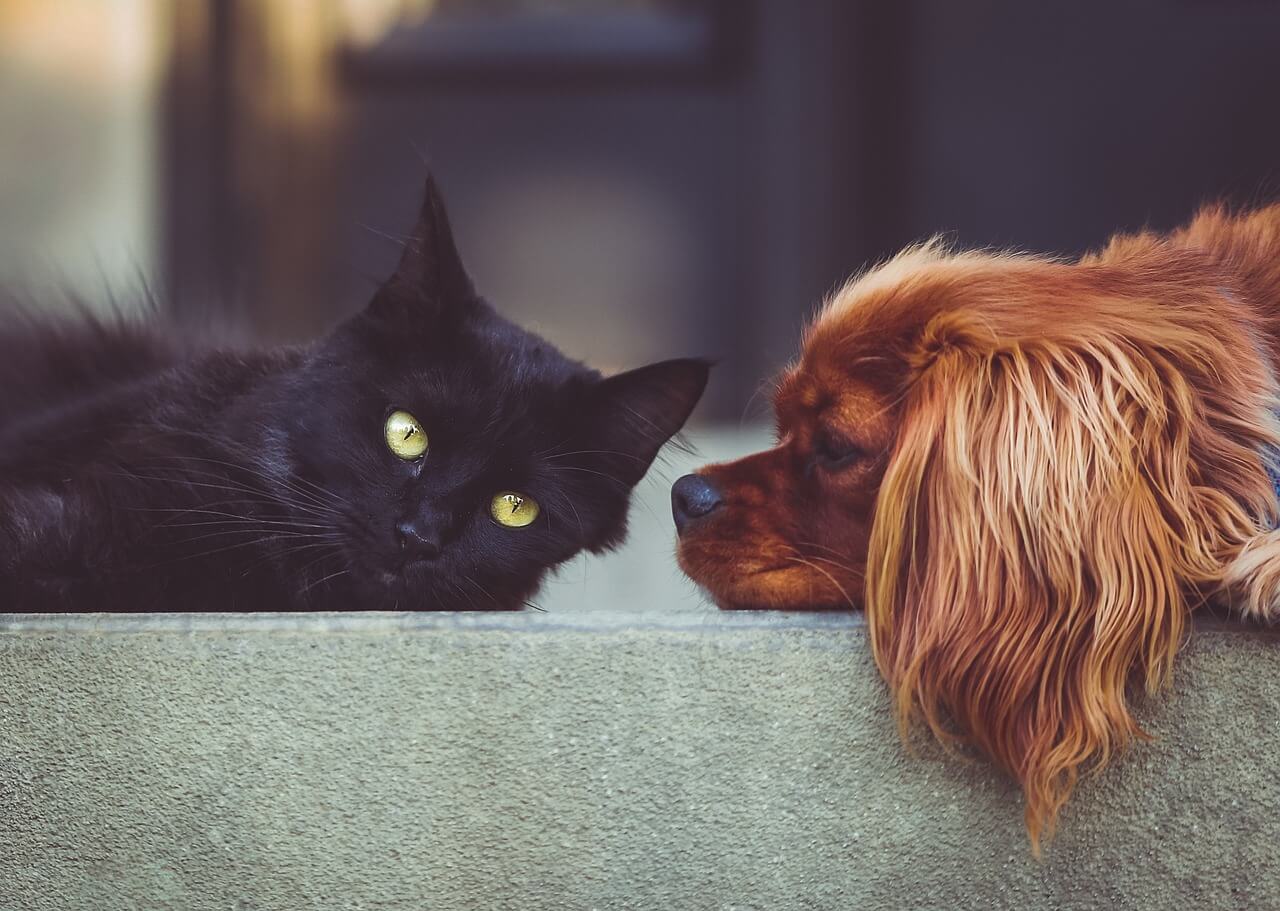Why Do Cats Hate Dogs and How Can You End This Rivalry


Cats and dogs are like oil and water—they just don’t mix. But why do cats hate dogs?
These two animals are one of the most popular pet choices around, but it’s not always smooth sailing between them.
Most cats seem to have a deep-rooted animosity towards their canine pals, although there are exceptions to this rule.
Some breeds of cats can get along with dogs quite peacefully, but when it comes to cats hating dogs, that seems to be the more common situation!
So why does this friction exist? Let’s take a closer look at this question.
How do cats view dogs?
Cats and dogs have a long-standing rivalry. We all know how cats feel about dogs — they absolutely hate them.
Cats view dogs as a direct threat to their own safety and will go out of their way to stay away from them.
Cats also view dogs as competition for resources. Cats are territorial animals, so they don’t take kindly to the presence of other animals in their space.
This phenomenon is especially true when those animals are larger, more powerful predators like dogs. On top of that, cats may see dogs as competitors for food and attention from humans.
Cats will also smell a dog’s scent on someone or something and be immediately put off by it. The scent of a strange animal can trigger an instinctual fear response in cats, making them wary and defensive around unknown dogs.
Overall, cats view dogs as dangerous threats that should be avoided at all costs. This explains why we often see cats running away or hissing at the sight of a canine companion!
Why do cats hate dogs?

It’s a classic clash of the ages: cats vs. dogs. It feels like these two animals have been at each other’s throats since time immemorial. Here are five possible explanations for this longstanding rivalry!
1. Prey Drive:
Cats and dogs evolved differently; cats were born hunters and dogs were born scavengers. This means that cats instinctively hunt small animals, including rodents, birds, and even smaller breeds of dogs.
Similarly, domesticated dogs tend to retain some level of their prey drive, which may cause them to view cats as potential targets.
2. Competition:
Dogs and cats are both territorial animals and they can sense when there’s another animal intruding on their turf.
This can lead to a lot of competition between the two species – especially if they’re vying for the same food or attention from humans!
3. Fear:
Cats and dogs have very different body language; while a dog might bow down in an attempt to appear friendly, cats interpret this type of behavior as aggressive or confrontational – which is why they tend to be so wary around dogs.
4. Discomfort:
One major reason why cats don’t like dogs is that most breeds of dogs are much larger than cats. This can be intimidating and make cats feel uncomfortable, which causes them to lash out.
5. Feline nature:
Cats are naturally aloof and independent. Cats can be aggressive in nature too. They don’t really like to interact with other animals, so it’s no surprise that they tend to keep their distance from dogs.
How to make a cat and a dog get along?

Getting a dog and a cat to peacefully co-exist can seem like an impossible task, but with the right guidance and preparation, it is possible! Here are 5 ways you can help your cat and dog get along:
1. Start Slow:
Firstly, don’t rush their introduction. Let your cat and dog see each other from afar at first.
Allow them to become comfortable in the same space before bringing them together, and remember to reward good behavior with treats or praise.
2. Respect Each One’s Space:
Provide each animal with their own safe spot away from the other one when they need a break from one another.
Make sure both have access to food and water stations that won’t be blocked by the other animal so they can eat in peace.
3. Establish Routines:
Have set daily routines for both animals, such as meal times and exercise. This will help them know what to expect and make them feel more comfortable with one another.
4. Introduce Toys:
Provide interactive toys that both animals can play with together, like balls or feather wands. This will foster a sense of camaraderie and can provide an outlet for their natural hunting instincts.
5. Exercise Together:
Take your pets on walks or runs together and provide opportunities for supervised playtime outside the house so they can learn how to interact without feeling confined by four walls.
This will build trust between the two and keep their energy levels balanced so they don’t take it out on one another.
With these tips and a lot of patience, your cat and dog can learn to peacefully co-exist in the same home! Just remember that every animal is different, so be sure to adjust your approach as needed.
Conclusion

It’s clear that cats and dogs are two very different animals with vastly different personalities, so it shouldn’t come as too much of a surprise that they don’t always get along.
Despite this, there are still plenty of examples of cat breeds and dog breeds that can co-exist in relative harmony.
This goes to show that although cats may be less than enthusiastic about the canine species, their hate isn’t unconditional!
With patience and understanding, even the most oppositional of creatures can learn to get along.



